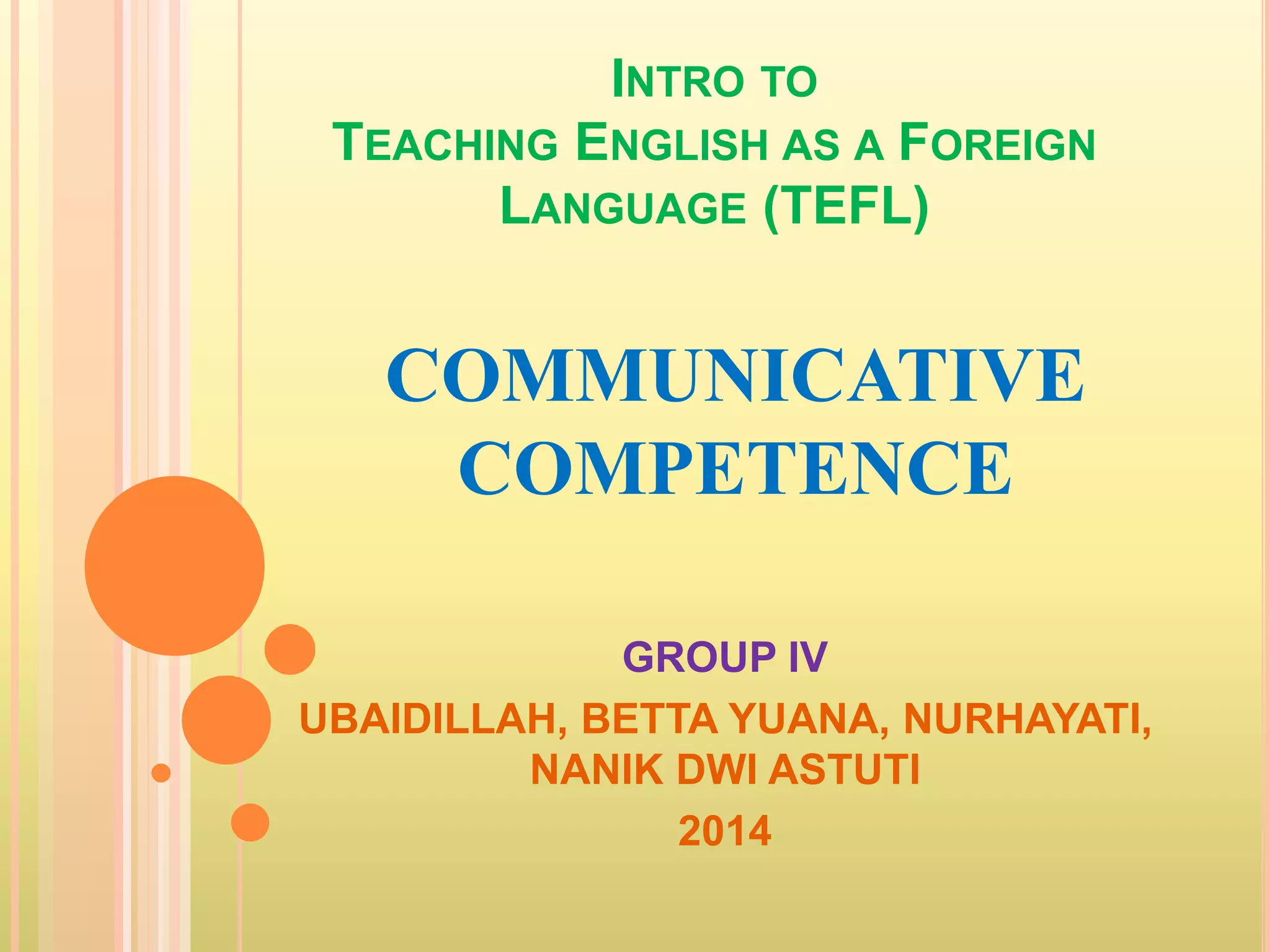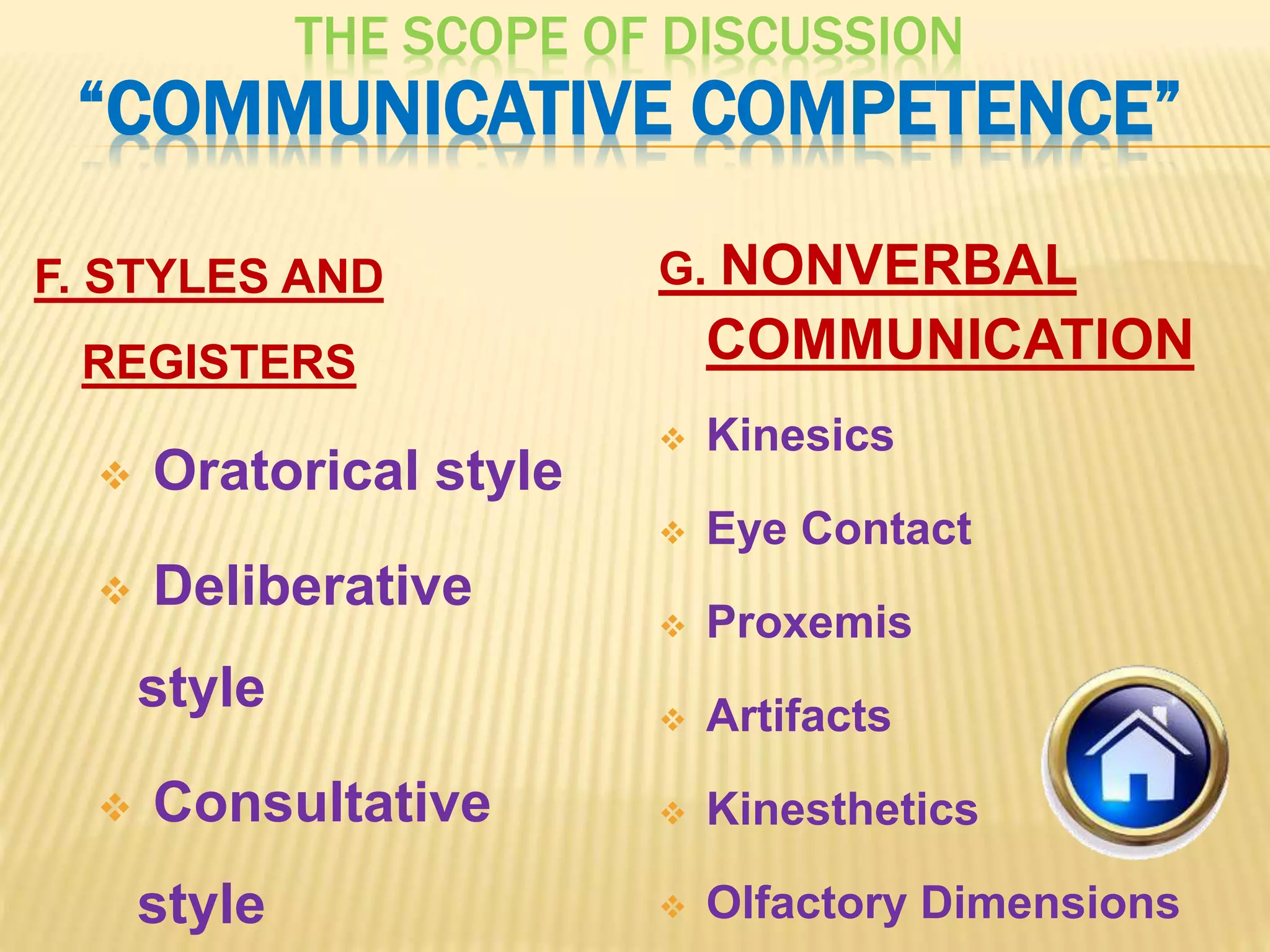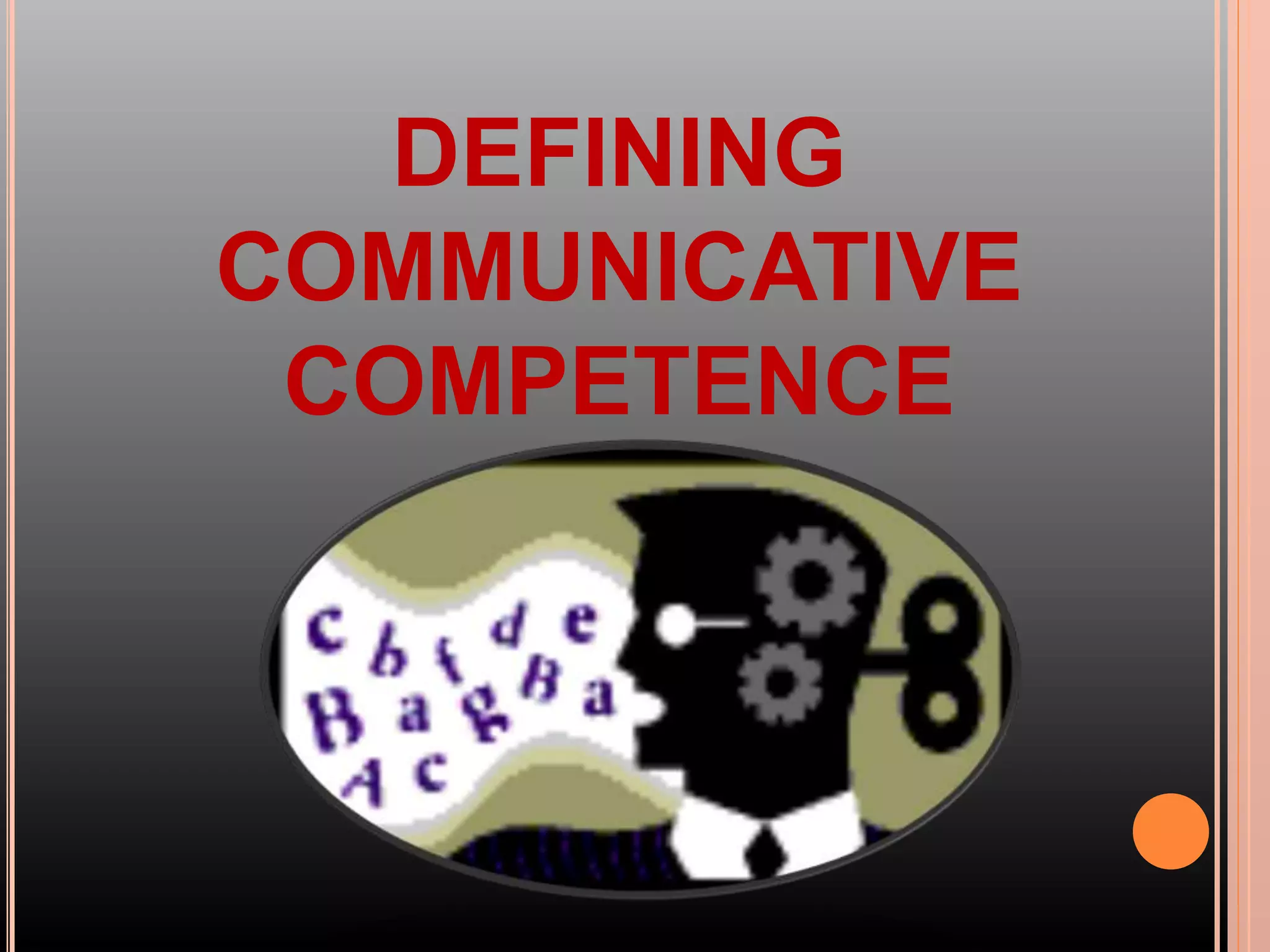This document discusses communicative competence in teaching English as a foreign language. It defines communicative competence according to various scholars such as Hymes, Chomsky, Savignon, and Cummins. Communicative competence includes grammatical, discourse, sociolinguistic, and strategic competence. The document also discusses language functions such as instrumental, regulatory, representational, interactional, personal, heuristic, and imaginative. It explains functional syllabuses which are based on recognizing and expressing communicative functions and concepts through language.































